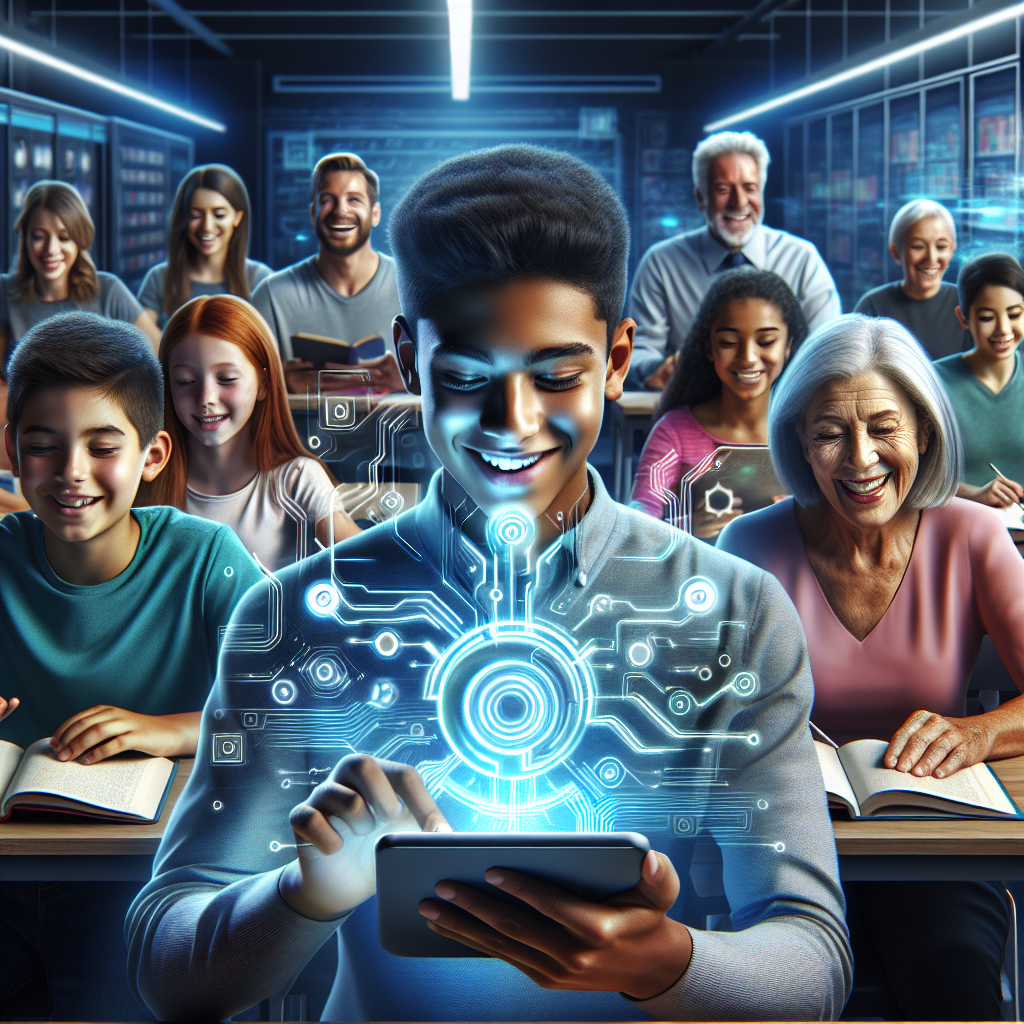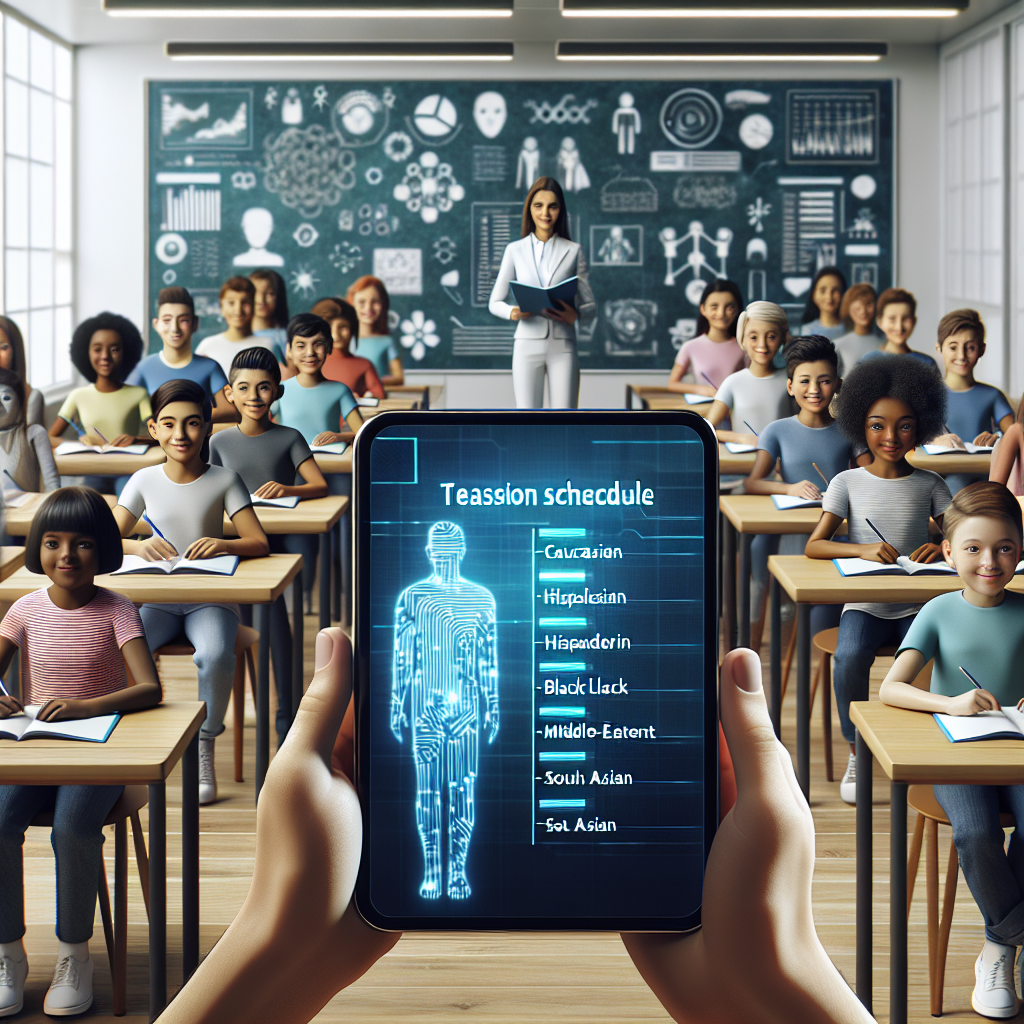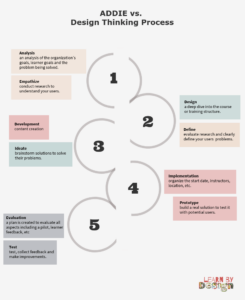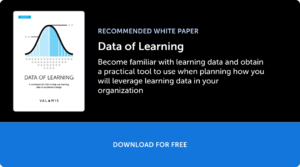Imagine a world where education is customized to fit your individual learning style and preferences. Thanks to the advancement of artificial intelligence (AI), this is becoming a reality. AI is revolutionizing instructional design by providing course designers with new tools and techniques to create personalized learning experiences. From automatic speech recognition to gamified learning experiences, AI is shaping the future of education. Adaptive learning adjusts the pace and difficulty of course material based on your performance, while intelligent tutoring systems offer personalized guidance and feedback. Natural language processing allows for conversational interfaces, like chatbots and virtual assistants, to answer your questions in a conversational manner. With predictive analytics, AI can even identify struggling learners and provide targeted support. The possibilities are endless, and the impact of AI on instructional design is undeniable.

AI Tools for Instructional Design
Artificial intelligence (AI) is revolutionizing instructional design by offering a range of innovative tools and techniques to course designers. These AI tools have been specifically developed to enhance different aspects of instructional design, catering to various needs and requirements. Let’s take a closer look at some of the AI tools that are transforming instructional design.
Automatic Speech Recognition
One of the AI tools that is widely used in instructional design is automatic speech recognition. This tool enables the conversion of spoken language into written text, making it easier to create transcripts and captions for audio and video content. Automatic speech recognition can help enhance accessibility and improve the overall learning experience by allowing learners to follow along with the spoken content.
Image Description Generation
Another valuable AI tool for instructional design is image description generation. This tool uses computer vision technology to analyze images and generate descriptive text. It enables course designers to provide detailed descriptions of visuals, making the content more accessible to learners with visual impairments. Additionally, image description generation enhances the understanding of complex visuals for all learners, improving their overall learning experience.
Plagiarism Detection
AI-powered plagiarism detection tools are essential in ensuring academic integrity and originality in educational materials. These tools use machine learning algorithms to compare written content against a vast database of sources, identifying any instances of plagiarism. Incorporating plagiarism detection tools into instructional design helps maintain the credibility of the material and promotes ethical behavior among the learners.
Assessment and Grading
AI tools for assessment and grading play a crucial role in streamlining the evaluation process. These tools utilize machine learning algorithms to automatically assess and grade assignments, quizzes, and exams. With AI-powered assessment and grading, course designers can save time and effort, allowing them to focus on providing timely feedback and personalized instruction to learners.
Mathematical Expression Interpretation
Mathematical expression interpretation is another area where AI tools are making a significant impact on instructional design. These tools use natural language processing and machine learning techniques to interpret and evaluate mathematical expressions. By automating these processes, course designers can create interactive and engaging learning materials that help learners understand complex mathematical concepts more effectively.
Graphing and Mind Mapping
AI-enabled graphing and mind mapping tools offer a visual approach to instructional design. These tools allow course designers to create interactive graphs and mind maps, helping learners visualize complex relationships and concepts. Course materials designed using these tools enhance learners’ comprehension and memory retention, making the learning experience more engaging and impactful.
Spelling, Grammar, and Writing Improvement
AI tools are invaluable for improving spelling, grammar, and writing in instructional design. These tools use natural language processing algorithms to automatically identify and correct spelling and grammar errors, as well as provide suggestions for writing improvement. By incorporating these tools into the design process, course designers can deliver content that is polished and error-free, facilitating effective communication and comprehension for learners.
Personalized Learning Experiences
AI opens up doors for personalized learning experiences tailored to individual student needs and preferences. By leveraging AI technologies, instructional designers can customize courses to meet the specific requirements of each learner, enhancing engagement, motivation, and overall learning outcomes.
Tailoring to Individual Student Needs
AI-powered personalized learning experiences can adapt the course content, pace, and level of difficulty to match individual student needs. Machine learning algorithms analyze student performance data and provide real-time feedback and recommendations. This tailored approach ensures that learners are continuously challenged and supported at their optimal level, promoting deeper learning and mastery of the subject matter.
Tailoring to Individual Student Preferences
In addition to meeting individual student needs, AI can also personalize learning experiences based on student preferences. By collecting data on learning styles, preferences, and interests, AI algorithms can create customized learning paths that align with each student’s strengths and interests. This personalized approach cultivates a sense of ownership and engagement, as learners are more likely to be invested in topics and activities that resonate with their preferences.
Adaptive Learning
Adaptive learning is a powerful AI-driven approach that adjusts the pace and difficulty of the course material based on the learner’s performance. AI algorithms analyze individual learning patterns and adapt the content delivery accordingly. This dynamic and personalized approach ensures that learners are always appropriately challenged, preventing boredom or frustration. Adaptive learning optimizes learning efficiency by focusing on areas where learners need the most support, accelerating knowledge acquisition and skill development.
Intelligent Tutoring Systems
Intelligent tutoring systems (ITSs) leverage AI technologies to provide personalized guidance and feedback to learners. These systems simulate the role of a human tutor, offering individualized instruction and support. ITSs can identify knowledge gaps, address misconceptions, and provide additional resources and practice opportunities based on the learner’s needs. By leveraging the power of AI, ITSs make the learning process more efficient, effective, and tailored to each learner’s unique requirements.
Conversational Interfaces
AI-powered conversational interfaces, such as chatbots and virtual assistants, enhance the learning experience by providing learners with interactive and conversational support. Learners can ask questions and receive immediate responses in a conversational manner, mimicking a real-time conversation with an instructor. Conversational interfaces enable learners to seek clarification, explore different perspectives, and deepen their understanding in a personalized and interactive manner.
Gamified Learning Experiences
AI can also be employed to create gamified learning experiences that motivate and engage learners. Gamification techniques such as leaderboards, badges, and rewards can be integrated into instructional design to increase learner motivation and foster a sense of achievement. AI algorithms can track learner progress, provide personalized challenges, and offer targeted feedback, enhancing learner engagement, retention, and satisfaction.
Predictive Analytics
AI-powered predictive analytics play a crucial role in identifying struggling learners and providing targeted support. By analyzing vast amounts of data on learner performance, engagement, and behavior, predictive analytics algorithms can identify patterns and trends that indicate areas of difficulty or disengagement. Course designers can then intervene with personalized interventions and support to address the specific needs of struggling learners, enhancing their learning outcomes.

AI and Adaptive Learning
AI plays a significant role in adaptive learning, which aims to adjust the pace and difficulty of course material based on learner performance. By collecting and analyzing data on learner interactions and progress, AI algorithms can dynamically adapt the content delivery to match the learner’s needs, ensuring optimal learning outcomes.
Adjusting Pace and Difficulty
AI algorithms monitor learner performance and engagement in real-time, allowing for continuous adjustments of the course pace and difficulty. Learners who demonstrate mastery of concepts can be provided with more challenging content, while learners who struggle can receive additional scaffolding or remedial resources. This personalized approach ensures that learners are appropriately challenged and supported at every stage of the learning journey.
Based on Learner Performance
AI algorithms leverage data on learner performance, such as test scores, completion rates, and time spent on tasks, to inform adaptive learning systems. By analyzing this data, AI models can identify learner strengths, weaknesses, and knowledge gaps, allowing for targeted interventions and support. Adaptive learning based on learner performance enables course designers to deliver tailored instruction and resources that cater to each learner’s specific needs.
AI and Intelligent Tutoring Systems
Intelligent tutoring systems (ITSs) leverage AI technologies to provide personalized guidance and feedback to learners. By simulating the role of a human tutor, ITSs enhance the learning experience and facilitate mastery of specific concepts or skills.
Personalized Guidance
ITSs offer personalized guidance by assessing the learner’s performance and providing targeted instruction and resources. By analyzing learner responses and interactions, ITSs can identify areas where the learner requires additional guidance or practice and provide customized support to address those needs. This personalized guidance helps learners stay on track, clarify their understanding, and build a strong foundation in the subject matter.
Personalized Feedback
One of the key benefits of ITSs is the ability to provide timely and tailored feedback to learners. Through machine learning algorithms, ITSs can analyze learner responses, identify misconceptions or errors, and offer detailed feedback in real-time. This personalized feedback encourages learners to reflect on their mistakes, correct their misconceptions, and make continuous progress towards mastery.
Mastery of Specific Concepts or Skills
ITSs are particularly effective in facilitating mastery learning, where learners are supported in achieving a deep understanding of specific concepts or skills. By providing personalized guidance, feedback, and practice opportunities, ITSs guide learners through a sequence of activities designed to build mastery. This iterative and individualized approach ensures that learners develop a strong foundation and can apply their knowledge or skills confidently.
AI in Conversational Interfaces
AI-powered conversational interfaces, such as chatbots and virtual assistants, enhance the learning experience by providing learners with interactive and conversational support.
Chatbots
Chatbots are AI-powered programs that simulate human conversation through text or voice interactions. In instructional design, chatbots can be used to answer learners’ questions, provide explanations, and offer personalized recommendations. The conversational nature of chatbots makes them engaging and accessible, as learners can seek clarification and explore topics in a conversational manner.
Virtual Assistants
Virtual assistants are AI systems that provide personalized assistance and support to learners. They can assist with a wide range of tasks, such as scheduling, resource recommendation, and progress tracking. Virtual assistants aim to automate administrative or logistical aspects of the learning experience, allowing learners to focus on the content and their individual development.
Conversational Manner
AI-powered conversational interfaces aim to emulate human conversation by using natural language processing algorithms. These algorithms enable chatbots and virtual assistants to understand and respond to learner queries and commands accurately. By interacting in a conversational manner, these interfaces create a more engaging and interactive learning experience, fostering learner participation and promoting deeper understanding.
Answering Learners’ Questions
One of the primary functions of conversational interfaces is to answer learners’ questions promptly and accurately. Through machine learning algorithms and knowledge bases, chatbots and virtual assistants can provide learners with immediate responses, explanations, or links to relevant resources. This on-demand support enables learners to quickly address their queries and continue their learning journey.
AI in Gamified Learning
AI is playing a vital role in creating gamified learning experiences that motivate and engage learners. By incorporating gamification techniques and AI algorithms, instructional designers can enhance learner motivation and drive meaningful learning outcomes.
Motivating Learners
Gamification techniques such as leaderboards, badges, and rewards tap into learners’ intrinsic motivation by providing external recognition and incentives. AI algorithms track learner progress and performance, awarding points, badges, or levels based on achievements. This element of competition and reward creates a sense of accomplishment, encouraging learners to actively engage with the material and strive for mastery.
Engaging Learners
AI technology contributes to the engagement aspect of gamified learning by providing personalized challenges and activities. Machine learning algorithms analyze learner behavior and progress, dynamically adapting the difficulty or content to match their abilities. This personalized approach ensures that learners are continuously engaged and appropriately challenged, maintaining their interest and promoting deeper learning.
AI and Predictive Analytics
Predictive analytics, powered by AI, provides valuable insights into learner behavior and performance, enabling course designers to identify struggling learners and provide targeted support.
Analyzing Data
AI algorithms can process and analyze vast amounts of data on learner interactions, performance, and engagement. By identifying patterns and trends within this data, predictive analytics algorithms can provide valuable insights into learner behavior and learning outcomes. Course designers can leverage these insights to make data-driven decisions and optimize learning experiences based on evidence and trends.
Identifying Struggling Learners
By analyzing learner data, predictive analytics algorithms can identify learners who are at risk of falling behind or not achieving desired learning outcomes. These algorithms take into account factors such as completion rates, performance on assessments, and engagement patterns to determine which learners may require additional support. Identifying struggling learners is critical for intervention and targeted assistance, ensuring that no learner is left behind.
Providing Targeted Support
Once struggling learners have been identified, AI-powered predictive analytics can enable course designers to provide targeted support and interventions. By understanding the specific challenges or obstacles faced by these learners, instructional designers can offer personalized resources, remedial activities, or additional tutoring opportunities. This targeted support promotes learner success and helps struggling learners overcome difficulties, improving overall learning outcomes.
Wide Range of AI Tools and Resources
AI is shaping and influencing instructional design in various ways, offering a wide range of tools and resources that instructional designers can utilize to create engaging and effective learning experiences.
Shaping Instructional Design
AI is reshaping instructional design by introducing new tools and techniques that were previously not possible. From automatic speech recognition to image-description generation, AI tools enhance various aspects of instructional design, such as accessibility, assessment, and content creation. Instructional designers can leverage these tools to create more inclusive, engaging, and efficient learning materials.
Influencing Instructional Design
AI also influences instructional design by providing valuable insights into learner behavior and performance. Through predictive analytics and adaptive learning, AI algorithms enable course designers to make data-driven decisions and tailor instruction to individual learner needs. By understanding learner preferences, strengths, and weaknesses, instructional designers can create more personalized and effective learning experiences.
Various Ways
AI tools and resources can be employed in various ways in instructional design. From personalized learning experiences to conversational interfaces, AI technologies provide innovative solutions for enhancing learner engagement, motivation, and achievement. Whether it’s adjusting the pace and difficulty of course material, providing personalized guidance, or analyzing learner data, AI offers a vast array of possibilities for instructional designers to create impactful and personalized learning experiences.
In conclusion, AI tools and technologies are revolutionizing instructional design by offering new ways to enhance accessibility, customization, engagement, and support for learners. From automatic speech recognition to predictive analytics, AI is transforming the way instructional designers create and deliver educational content. By leveraging AI tools and resources, instructional designers can create personalized learning experiences, support individual learner needs, and optimize learning outcomes. The wide range of AI tools available provides instructional designers with a wealth of opportunities to shape and influence instructional design, ultimately improving the overall learning experience for learners.




